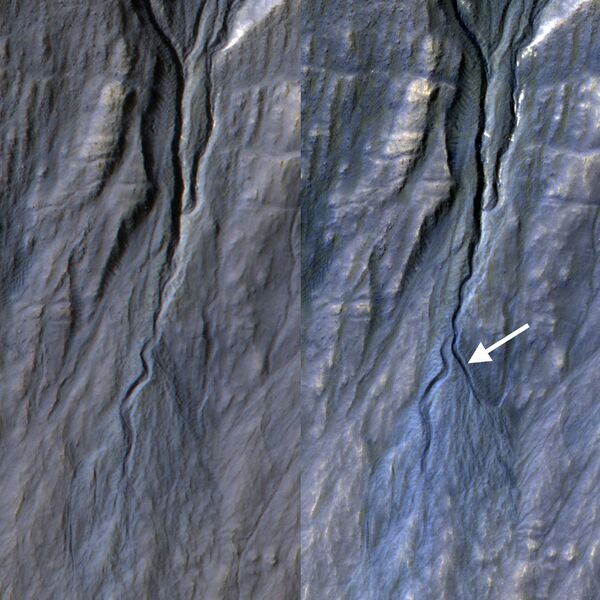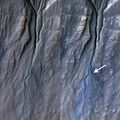File:ESP 032011 1425newgullies.jpg

Original file (800 × 800 pixels, file size: 790 KB, MIME type: image/jpeg)
Summary
Changes in gullies, as seen by HiRISE This observation is evidence that something other than flowing water can make gullies.
Observations like this show that gullies are forming today. Although we cannot pin down the season of this event, locations where HiRISE has been able to image more often demonstrate that this sort of event generally occurs in the winter, when liquid water is very unlikely. Despite their resemblance to water-formed ravines on Earth, carbon dioxide may play a key role in the formation of many Martian gullies.
Source: https://static.uahirise.org/images/2014/details/cut/ESP_032011_1425.jpg
Credit: NASA/JPL/University of Arizona
Licensing
Public domain images are available for anybody to use without any licenses, royalties, or special permissions.
File history
Click on a date/time to view the file as it appeared at that time.
| Date/Time | Thumbnail | Dimensions | User | Comment | |
|---|---|---|---|---|---|
| current | 10:11, 31 October 2021 |  | 800 × 800 (790 KB) | Suitupandshowup (talk | contribs) | Changes in gullies, as seen by HiRISE This observation is evidence that something other than flowing water can make gullies. Observations like this show that gullies are forming today. Although we cannot pin down the season of this event, locations where HiRISE has been able to image more often demonstrate that this sort of event generally occurs in the winter, when liquid water is very unlikely. Despite their resemblance to water-formed ravines on Earth, carbon dioxide may play a key role... |
You cannot overwrite this file.
File usage
The following page uses this file:






